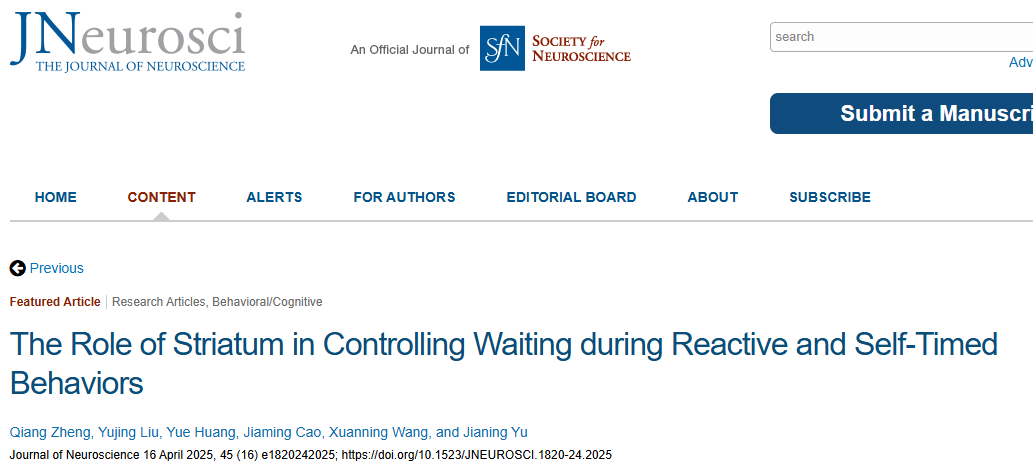Dr. Jianing Yu: The Role of Striatum in Controlling Waiting during Reactive and Self-Timed Behaviors

Abstract
The ability to wait before responding is crucial for many cognitive functions, including reaction time (RT) tasks, where one must resist premature actions before the stimulus and respond quickly once it is presented. However, the brain regions governing waiting remain unclear. Using localized excitotoxic lesions, we investigated the roles of the motor cortex (MO) and sensorimotor dorsolateral striatum (DLS) in male rats performing a conditioned lever-release task with variable delays. Neural activity in both MO and DLS showed similar firing patterns during waiting and responding periods. However, only bilateral DLS lesions caused a sustained increase in premature (anticipatory) responses, whereas bilateral MO lesions primarily prolonged RTs. In a self-timing version of the task, where rats held a lever for a fixed delay before releasing it, DLS lesions caused a leftward shift in response timing, leading to persistently greater premature responses. These waiting deficits were accompanied by reduced motor vigor, such as slower reward-orienting locomotion. Our findings underscore the critical role of the sensorimotor striatum in regulating waiting behavior in timing-related tasks.
Original Link: https://doi.org/10.1523/JNEUROSCI.1820-24.2025